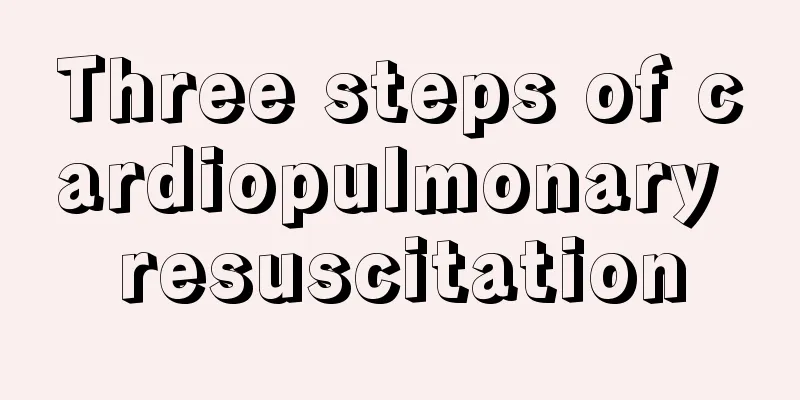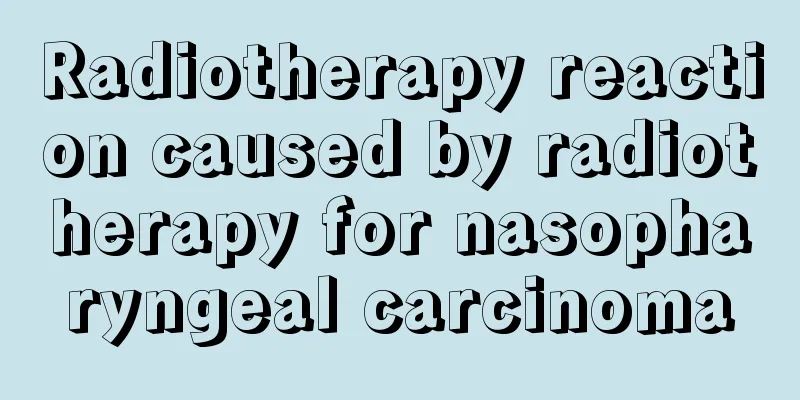Three steps of cardiopulmonary resuscitation

|
Cardiopulmonary resuscitation refers to emergency treatment for patients who are temporarily in shock in an emergency situation. CPR can restore the patient's normal heartbeat and maintain life. CPR also requires mastering the key points and operating techniques to provide correct treatment. The three steps of CPR are: first, press the patient's chest to restore the heartbeat. Artificial respiration can also be performed when necessary. Lift the patient's head and pay attention to the frequency of compression. What are the three steps of CPR? The three basic steps of cardiopulmonary resuscitation can be summarized as CAB. The first step is C: Chest compressions, 30 times, with the compression point being the lower part of the sternum, the compression depth being 5 to 6 cm, and the frequency being 100 to 120 times per minute. Open airway (A): Generally, it is the forehead pressing and jaw lifting method. Finally, mouth-to-mouth artificial respiration (B) 2 times, each time blowing for more than 1 second. Just inhale normally before blowing. Repeat this process of 30 compressions followed by two deflations until the patient recovers or emergency personnel arrive. Additional Steps 1. Judgment awareness Pat the patient's shoulders with both hands and call the patient to observe whether there is any response. 2. Call for help Immediately call other medical personnel for rescue and bring a defibrillator. 3. Determine heartbeat and breathing Lift the quilt, unbutton the outer clothes, touch the carotid artery, and observe the rise and fall of the chest to determine the heartbeat and breathing conditions. If the heart stops beating or breathing stops, perform cardiopulmonary resuscitation immediately and record the start time of rescue. 4. Chest compressions (C) (1) Preparation: Move the bedside table away and quickly place the patient in a supine position without a pillow, with a compression board and a footstool placed under the chest. (2) 30 chest compressions (17 seconds to complete): A. Location: The midpoint of the line connecting the two nipples or two horizontal fingers above the xiphoid process B. Technique: Use the method of overlapping your hands, straighten your wrists and elbows, and use your body gravity to press vertically downward. C. Depth: sternum depression ≥ 5cm D. Frequency: ≥100 times/min 5. Open the airway (A) (1) Clear the respiratory tract: Turn the patient's head to one side and use the right index finger to clear foreign objects in the mouth. (2) Open the airway: The methods to open the airway include lying on the back with the chin lifted and jaw thrust. The commonly used supine chin-lift method is that the rescuer places the hypothenar of his left hand on the patient's forehead and presses the palm backwards to make the head tilt back. The middle finger and index finger of his right hand are separated in a scissors shape and placed under the patient's chin and lifted upwards to straighten the airway. It is forbidden for patients with neck injuries to avoid damaging the spinal cord. 6. Artificial respiration (B) Use a simple respirator to ventilate twice, use the "EC technique", perform artificial respiration once every 6-8 seconds, 8-10 times/minute, each breath is about 1 second, ventilation is about 0.5 liters, and the chest can be seen rising and falling. 7. Continuous cardiopulmonary resuscitation Continue cardiopulmonary resuscitation with a ratio of chest compression to artificial respiration of 30:2, and repeat this method repeatedly until recovery is achieved. 8. Observe the effective signs of cardiopulmonary resuscitation (1) Observe the heartbeat and breathing: Touch the carotid artery (10 seconds) and observe the breathing. (2) Observational awareness: observe pupil changes, orbital pressure reaction, and light reflex. (3) Observe circulation: observe changes in cyanosis of the face, lips, and nail beds, improvements in peripheral circulation, and measure blood pressure. (4) Determine whether resuscitation is successful: Continue to provide advanced life support. 9. Organize and record (1) Remove the compression board, tidy up the patient’s clothes, place a pillow under the patient’s head, cover the patient with a quilt, and install a headboard. (2) Wash hands and record the rescue process. |
<<: What's the matter with the black spots on the tongue
>>: What is the compression frequency for adult CPR?
Recommend
6 fleeting signs of a serious illness
First, numbness and tingling in the arms and legs...
Can sea salt help lose weight
Losing weight has become the theme song of modern...
Bladder cancer has not recurred for 5 years
As for bladder cancer, it is a very common diseas...
There is a piece of flesh growing at the urethra opening, caused by genital warts
People usually don't pay any attention to the...
What are the common symptoms of lung cancer? Clinical manifestations and diagnostic points of lung cancer
There are still many patients with lung cancer in...
How to distinguish between bony and dental causes of protruding mouth
Protruding mouth is a common facial defect in man...
What diseases does the infectious disease department include?
In any hospital, there are many departments. Diff...
Exercise can help bone cancer patients recover
Bone tumors are tumors that occur in bones or the...
What are the detoxification reactions of moxibustion on the belly button
When you do moxibustion on your belly button, it ...
What are the Class B infectious diseases?
I don’t know if you have heard of Class B infecti...
What's wrong with drooling while lying down
Drooling is a very common phenomenon in normal ti...
Large intestine reflexology area body part
You may have heard that each of people's fing...
What to do if you have nosebleeds due to liver cancer? Pay attention to these points
After getting cancer, many patients will become d...
What's wrong with the black intestines
Gastrointestinal diseases are very common around ...
How long does it take for ovulation to occur after leucorrhea stringing
After the leucorrhea becomes stringy, it means th...









